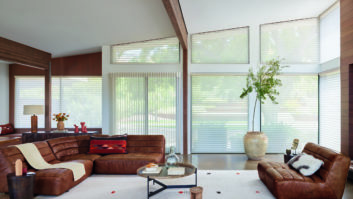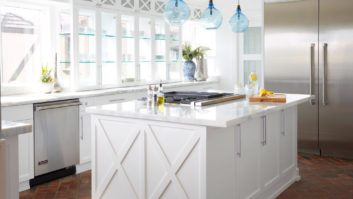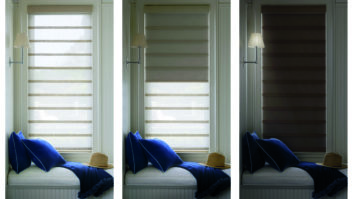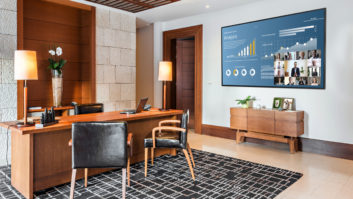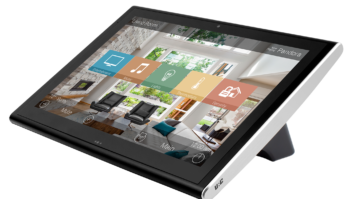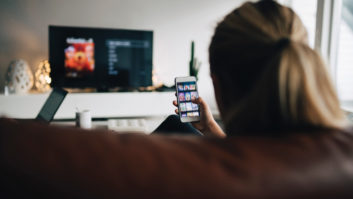Three little words represent what may be the most misunderstood term in the residential AV industry: whole home automation.
Just ask Joseph August Mattera, owner, Mattera AV Design, New York, NY. About 75 percent of his clients are new to whole home automation. Typical projects focus on full renovations of apartments, lofts, and townhouses, as well as large projects for homes in Connecticut, New Jersey, and Miami.
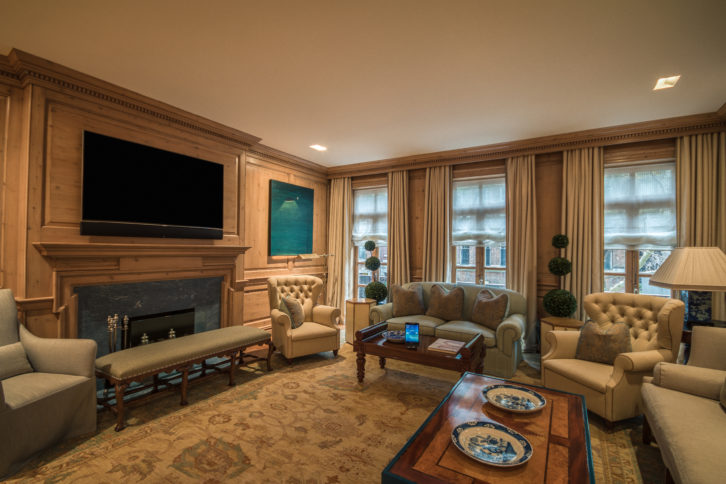
“We have found that a lot of our prospective clients think home automation means simply having a ton of apps on their phones and tons of wireless smart devices in a variety of brands and models,” Mattera says. “They actually believe that this alone comprises a smart home.”
In Red Bank, NJ, Infinite AV Solutions owner Daniel Tapolow specializes in projects for custom homes, and offers a degree of freedom for future proofing. “A lot of spec builders don’t fully understand the direction of the tech industry,” he says, “and do not prepare for wiring, so we have to go in and reverse engineer or retrofit.”
Many manufacturers, he adds, have started using the term “smart” for everything. “That word is thrown around so loosely. A client can spend five minutes on Google and think they know what they want, but it’s rarely what they need. A lot of web sites and commercials link them to consumer products like Nest or Ring. And maybe that’s what they want, but we often can point them in a better direction.”
Most commonly, clients request that automation systems be simple to use, Tapolow says. “To me, that means that the misconception is that they think of our systems as complex. The complexity is in the background; the simple user interface is no more complex than an out-of-the-box product.”
Show and Tell
Taking the time to educate the client about what constitutes an actual smart home is essential, Mattera says. “We make sure we take that time for each client, explaining to them how important it is to have everything structurally wired to one main head end, hard wired to one central equipment location.”
Mattera further explains that this one central location gives him the ability to seamlessly integrate and program all the devices into one platform and control system. “So the clients learn that they will no longer have to bounce in and out of apps that all look different, on different platforms, and totally relying on wireless,” he notes. “Indeed, some of the devices work better when hardwired.”
Rather than approaching whole house automation strictly on a sales basis, Tapolow also focuses on the educational experience, asking about what research the client has done, and learning lifestyle details. “About 60 percent of our projects are for new systems, with the remaining 40 percent as takeovers where previous systems were decades old,” he says. “Some of those systems were installed at the time of the AV transition to network-style systems, or were newer systems where the client just isn’t happy.”
Other Resources: Integration Guide to High-End Audio 2019
Infinite AV Solutions partners with the Red Bank Design Center, a collaborative workspace for interior designers where clients can select AV design as well as flooring and home design features. “Although many AV companies fail to connect with interior designers, we maintain a space in there as a showroom,” Tapolow says, “and we have installed a lot of tech blended into other spaces as well. This demonstrates to the designers that our tech will not adversely affect their designs. Installing Samsung’s The Frame TV is a good example of this.”
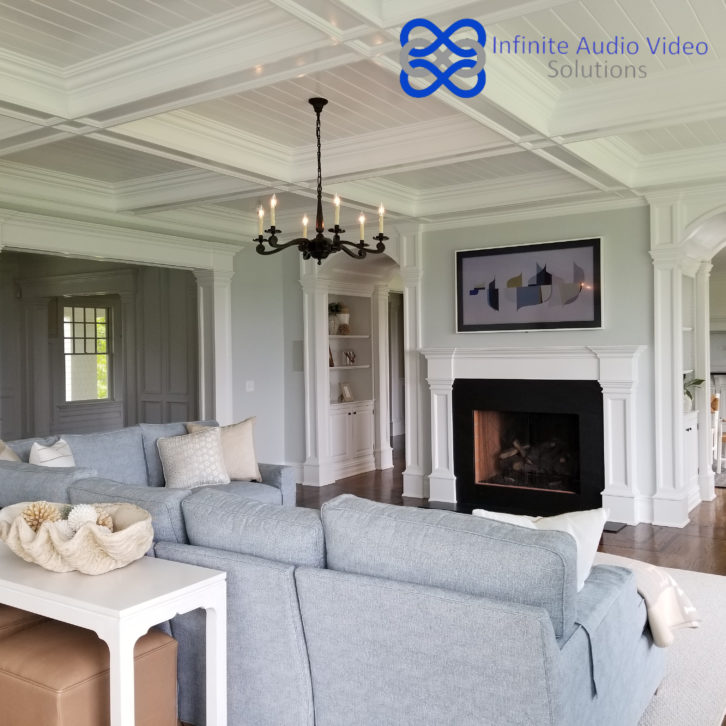
Tips to the Trade
Tapolow previously worked for AV companies that were great at getting in the door, but failed to follow up with clients, he says. “We’re service oriented. Our focus is communicating and connecting at the crucial handoff point; that’s how you get referrals.”
Managing expectations is also recommended, he adds. “Don’t inflate what is — and is not — possible. Sometimes the sales department says ‘yes’ to a client’s request only to have the tech say ‘no.’ We’re upfront about what we do.”
Take advantage of the ability to customize, Tapolow says. “We populate personalized images, such as a picture of the kitchen, to cycle through the control system. And don’t assume that you know what a potential client wants; let them do the talking to give you an idea of what’s really important to them.”
Showing ease of use to a client goes a long way to explain the simplicity and customization of a system, Mattera notes. “It can be done through having some demo control units, showing case studies, or bringing a prospective client to visit the residence of a former client so they can see and feel the system in a real-use scenario.”
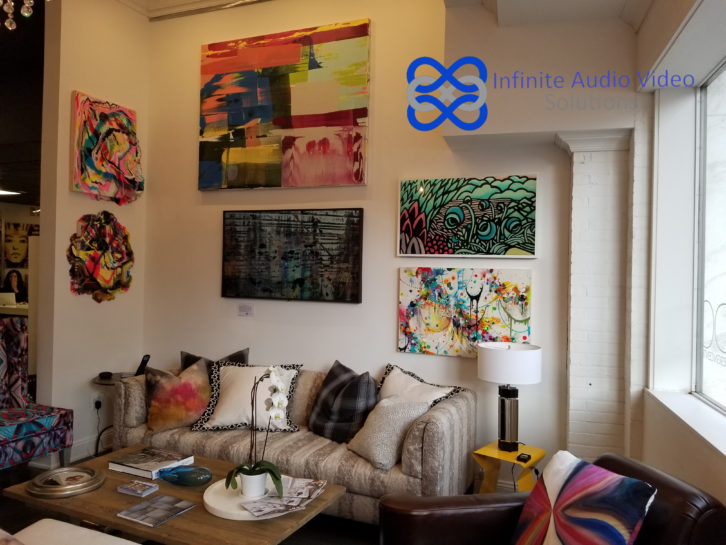
Projects Speak for Themselves
At Infinite AV Solutions, Tapolow designed a project for a retired couple in a beautiful old house installed with a decade-old AV system. “Not surprisingly, they wanted a real simple and easy-to-use system,” he says. “They were not into a control system, so we invited them to our showroom and let them sit there, and, when they handled the remote, that changed everything. We installed a URC Total Control 2.0 system for them.
“Now that they see what’s possible, they want outdoor AV, more lighting control, and customized programming to include an alarm clock and music in the morning. Their gears are spinning.”
Mattera had a recent client who originally was thinking about a system with separate Sonos speakers in each room, as well as a security camera app and a Lutron Lighting app. “They also thought simply having a ‘stealth IR’ in each local media room was a good solution.”
Other Resources: The Integration Guide to Outdoor AV 2019
Considering the size of this project, Mattera explained how integrating everything into one simple RTI control system and interface, using a more seamless approach, would be much better for a residence of this particular size. “We also integrated the local media rooms into one iPad interface, so now the client can not only control the media in those rooms, but the lighting, shades, and thermostats. The clients were blown away with the final product. They had no idea that these solutions were even out there, and how simple it was to virtually control all six stories of their home and any device from anywhere within the residence with a touch of a button. This client liked RTI because of its customization, aesthetic, and ease of use. And we like to program scenes; once a client sees that, they can’t believe they’ve lived without it.”
Current client requests, Mattera adds, include control for thermostats and lighting. “That’s the biggest trend I see right now, but I’m sure it will change in six months.”

